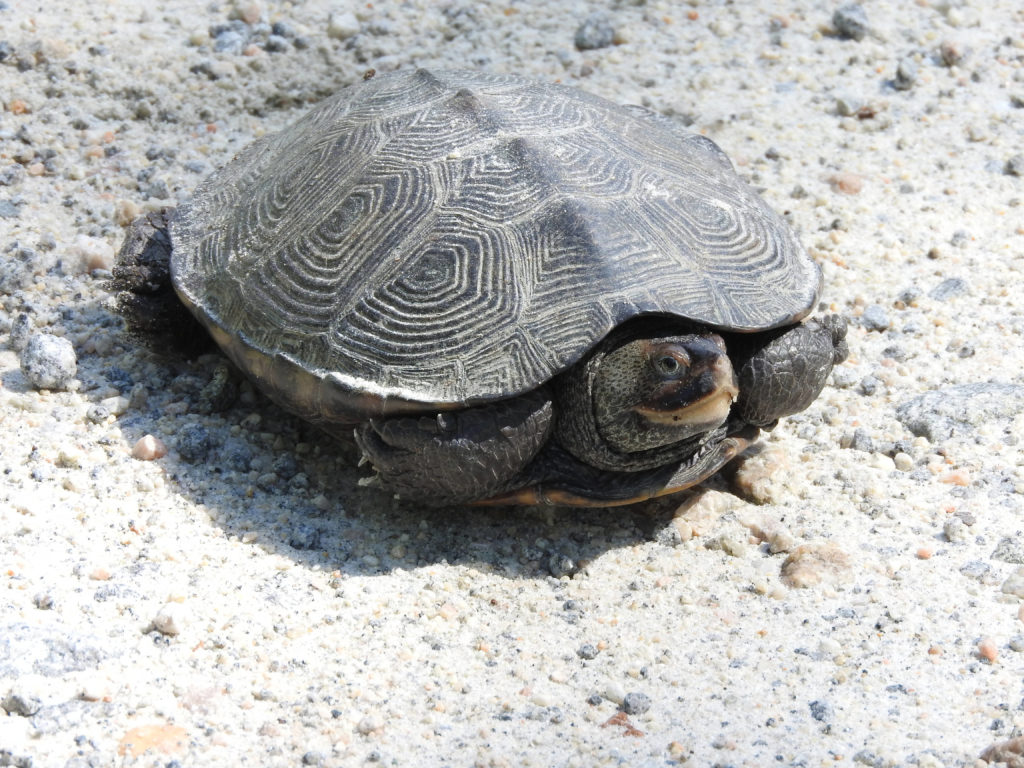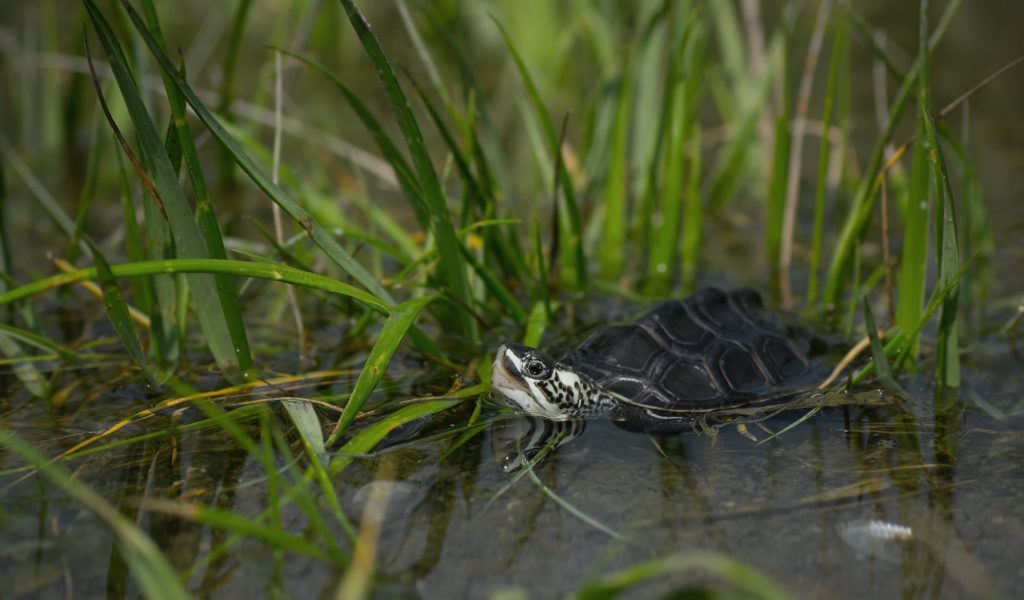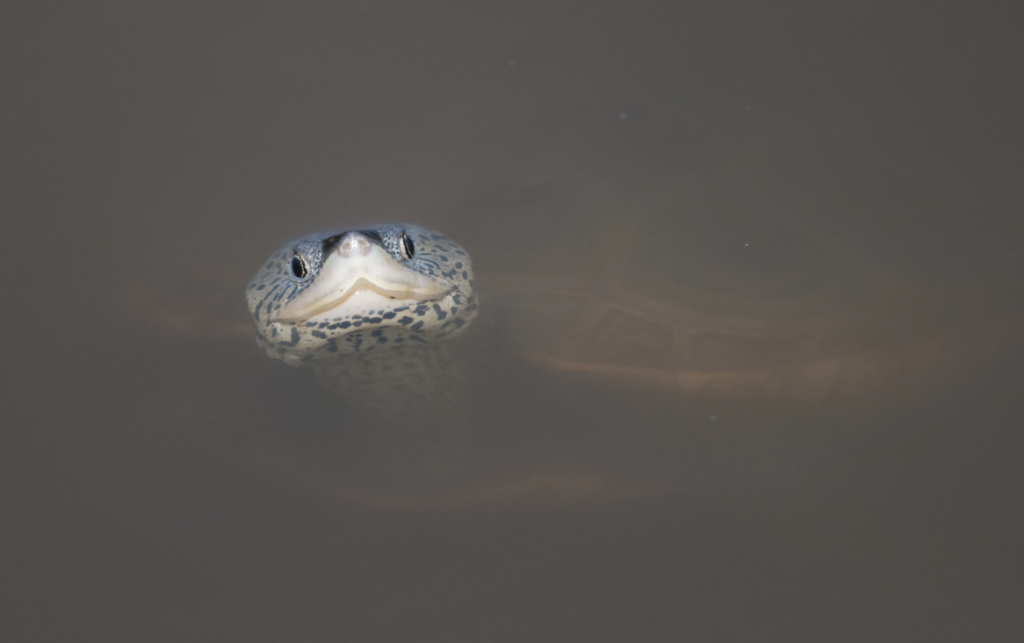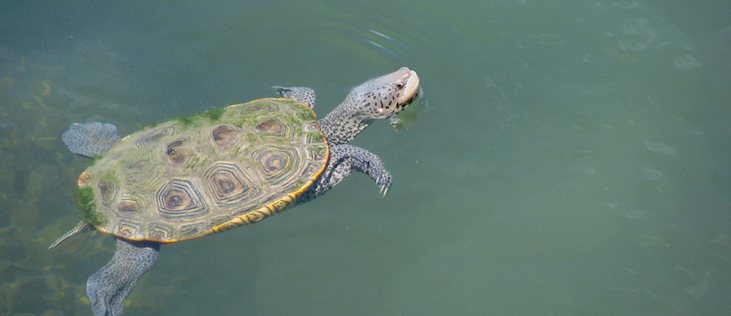Diamondback Terrapins
About Diamondback Terrapins
One of Long Island’s more iconic coastal species is the Diamondback Terrapin (Malaclemys terrapin), the only turtle in the world that inhabits brackish water habitats such as salt marshes, tidal creeks, and shallow bays and harbors. Individual terrapins can be seen with their heads bobbing at the water surface, basking in the sun on mud banks, and, most excitedly, occasionally encountered when a female comes ashore seeking a nesting site to lay her eggs. On Long Island, historically, terrapin populations faced a number of threats including direct human harvest for food, and destruction of coastal nest-laying habitat (take a look at an aerial photograph of southern Nassau County and/or southwestern Suffolk County and the widespread destruction and alteration of habitats is plainly evident). Fortunately, collecting terrapins for food has been made illegal but they still face a myriad of other threats that jeopardize their long-term survival here such as motor vehicle and boat collisions. To address these threats and address other basic aspects of terrapin ecology, Seatuck and a coalition of governmental entities, other nonprofit organizations and academic institutions have formed the Long Island Diamondback Terrapin Working Group, which first met in 2018. Seatuck and our partners are seeking volunteer citizen scientists to join “Terrapin Watch,” which seeks to identify important Diamondback Terrapin habitat across Long Island, as well as potentially dangerous road crossings.





Join Terrapin Watch
In June 2020, the Peconic Estuary Partnership co-hosted the Long Island Diamondback Terrapin Monitoring Workshop with Seatuck and Dr. Russell Burke of the Jamaica Bay Project which covered topics regarding natural history, biology, and how to survey for diamondback terrapins. You can view the recorded Zoom presentation here.
Join the growing number of citizen scientists from around Long Island in monitoring the occurrences of Diamondback Terrapins in our region. The information from Terrapin Watch helps ascertain important nesting and foraging sites and identify hazardous road crossings. It also helps guide efforts to safeguard this iconic Long Island species.



